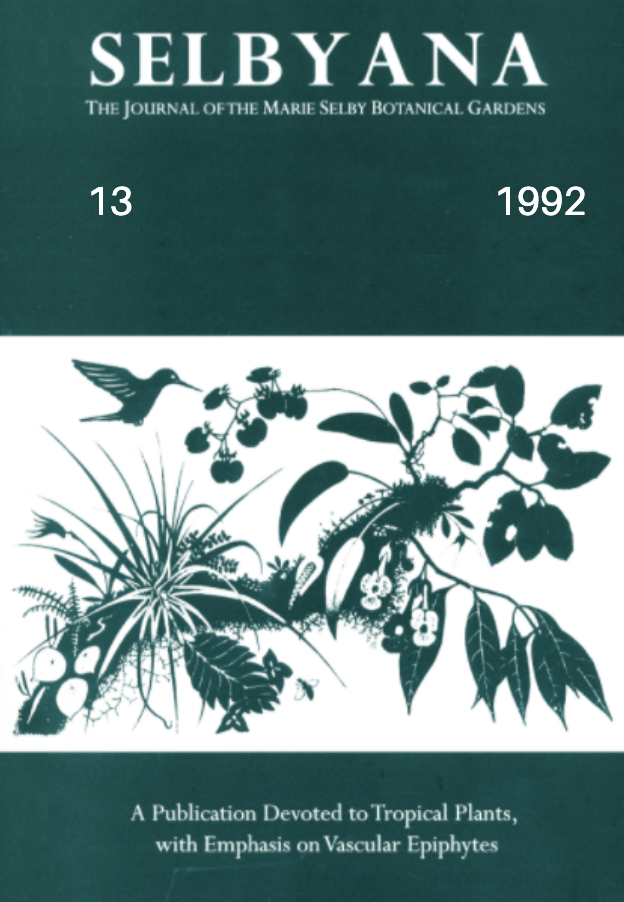Abstract
Responses offive species ofsubcanopy bromeliads (Tillandsia balbisiana, T. fasciculata, T. setacea, T. utriculata, and T. valenzuelana) to large-scale disruption by naturally-occurring, low-intensity fire were inferred from comparisons ofpopulations in burned and unburned subtropical hardwood hammocks one year after fire on Long Pine Key in Everglades National Park, Florida. In burned hammocks, the soil humus was consumed. Many trees were defoliated and/or killed, which opened the canopy. Comparisons ofepiphyte populations in burned and unburned hammocks, which were very similar in pre-fire characteristics, indicate that fire had few direct effects on these species. Nonetheless, by altering the environment, fire changed the basic demography (increased mortality, growth, and flowering) of bromeliad populations. Field study ofepiphyte seeds on different species ofhost trees also indicated that short-term adherence on trunks differed between two species (T. fasciculata and T. utriculata), and between burned and unburned hammocks. These results indicate that large-scale disturbances ofthe overstory can result in rapid changes in population dynamics of epiphytes. Such changes can potentially influence long-term composition and dynamics ofpopulations ofsubcanopy epiphytes.
Open Access and Copyright Notice
Selbyana is committed to real and immediate open access for academic work. All of Selbyana's articles and reviews are free to access immediately upon publication. There are no author charges (APCs) prior to publication, and no charges for readers to download articles and reviews for their own scholarly use. To facilitate this, Selbyana depends on the financial backing of the Marie Selby Botanical Gardens, the hard work and dedication of its editorial team and advisory board, and the continuing support of its network of peer reviewers and partner institutions.
Authors are free to choose which open license they would like to use for their work. Our default license is the Creative Commons Attribution-NonCommercial 4.0 (CC BY-NC 4.0). While Selbyana’s articles can be copied by anyone for noncommercial purposes if proper credit is given, all materials are published under an open-access license with authors retaining full and permanent ownership of their work. The author grants Selbyana a perpetual, non-exclusive right to publish the work and to include it in other aggregations and indexes to achieve broader impact and visibility.
Authors are responsible for and required to ascertain that they are in possession of image rights for any and all photographs, illustrations, and figures included in their work or to obtain publication or reproduction rights from the rights holders. Contents of the journal will be registered with the Directory of Open Access Journals and similar repositories. Authors are encouraged to store their work elsewhere, for instance in institutional repositories or personal websites, including commercial sites such as academia.edu, to increase circulation (see The Effects of Open Access).
